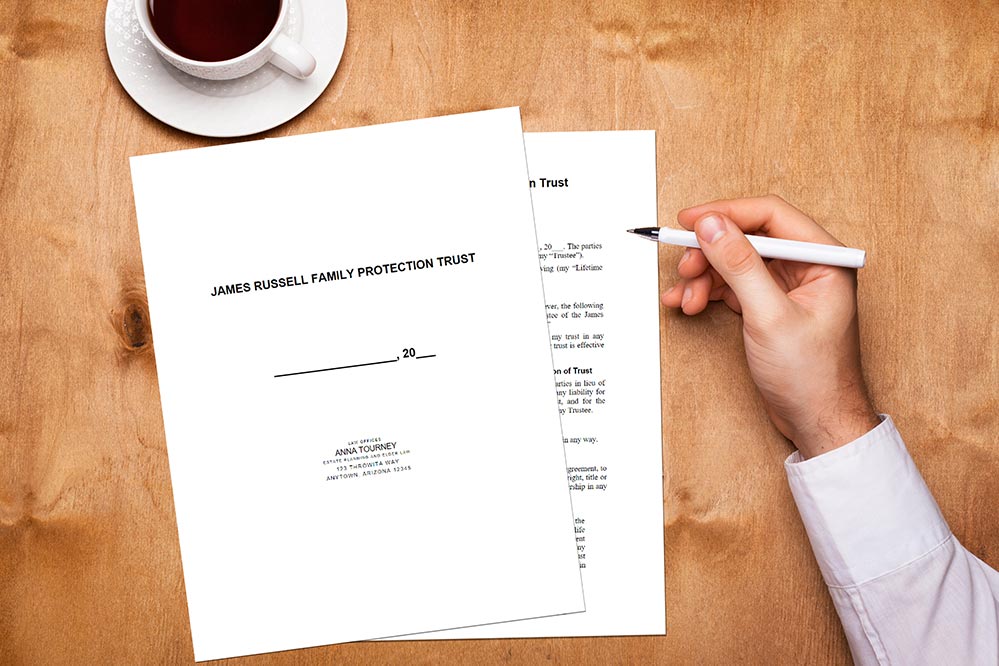
If you are an avid user of Elder Docx™, WealthCounsel’s state-of-the-art document drafting software, you’ve probably drafted a Medicaid Asset Protection Trust (MAPT). The MAPT is an irrevocable trust that protects assets from being counted for long-term care Medicaid eligibility. But did you know that the MAPT has a cousin, the Medicaid Family Protection Trust (Family Trust)?
The Family Trust, like the MAPT, protects assets from being counted for long-term care Medicaid eligibility. But, the Family Trust has also been designed to achieve optimal asset protection for both the grantor and beneficiaries. How is this asset protection achieved?
1. No income distributions to the grantor
In the MAPT, you can design the trust so that the grantor has an income right. In some jurisdictions, this income right is not problematic for Medicaid eligibility. In the Family Trust, an income right for the grantor is not allowed. If the trust is self-settled—that is, funded with an income beneficiary's own assets—then state law may allow a creditor into the trust to satisfy the grantor-beneficiary's liabilities, so long as the assets can be distributed to the grantor-beneficiary, even if the grantor-beneficiary has no power to require a distribution. For this reason, the grantor is not allowed to be an income beneficiary of the Family Trust in an effort to afford the grantor the most asset protection possible under state creditor law.
2. Distribution Trustee
While a Distribution Trustee is optional in the MAPT, such role is required in the Family Trust. A Distribution Trustee is an independent party that is solely responsible for making distributions to beneficiaries during the life and after the death of the grantor. (A regular trustee is responsible for all other trust administration duties—accounting, investing, etc.) Having someone serving as Distribution Trustee who is independent—not related or subordinate to the grantor or beneficiary or someone that can be removed and replaced by the grantor or a beneficiary—adds a level of asset protection. This is because, theoretically, the grantor or beneficiary cannot control the actions of an independent party serving as trustee, and so the independent trustee would not be considered the grantor or beneficiary’s alter ego acting in their own interests.
3. General Needs Trust for residuary beneficiaries
Instead of residuary beneficiaries receiving their share outright, which would afford no asset protection to those beneficiaries, residuary beneficiaries of the Family Protection Trust must receive their share via a General Needs Trust. Further, the General Needs Trust has specific parameters: there is no requirement to distribute all of the net income, no scheduled distributions or withdrawal rights, and only a Distribution Trustee can distribute principal to the beneficiary.
4. Trust Protector provisions
A Trust Protector is someone who acts if there is a problem in the trust administration of the Family Trust or any future subtrusts. A Trust Protector must also be an independent party, per the terms of the Family Trust. A Trust Protector adds asset protection value by being able to amend certain trust provisions if an issue needs to be addressed.
Whether you use the MAPT or the Family Trust, you can help clients protect assets from being countable when applying for long-term care Medicaid. In a proactive planning case, you set up the trust, fund the trust, and wait out the applicable look-back period. After the look-back period, the client could qualify for long-term care Medicaid benefits to get the nursing home care they need. The MAPT and Family Trust are just a few of the trusts offered by Elder Docx. Contact us today to learn more.


.png)
